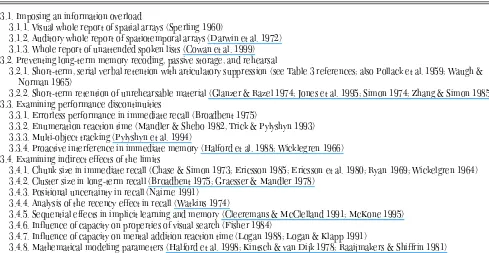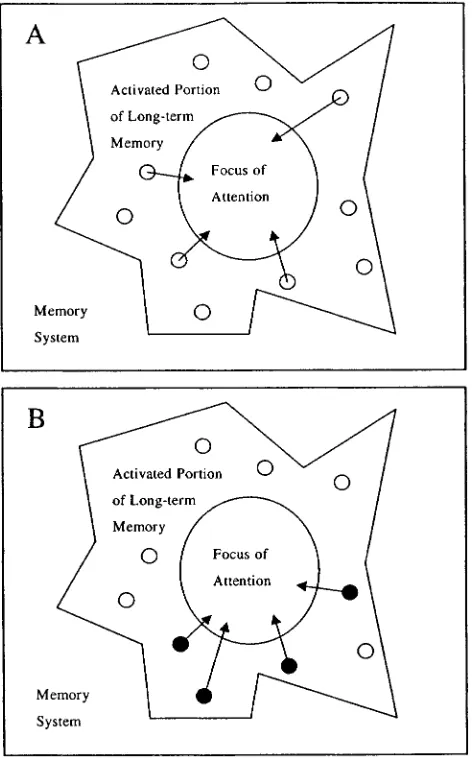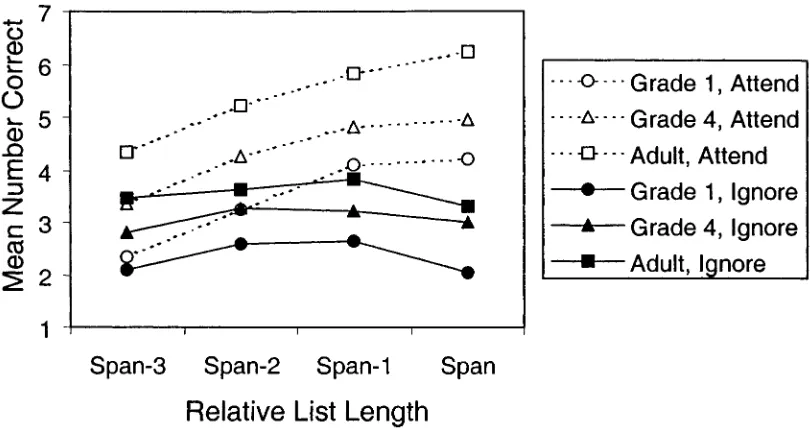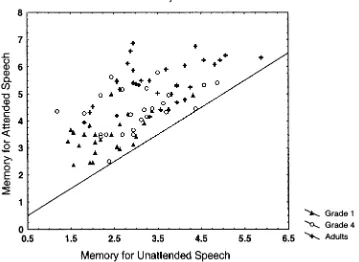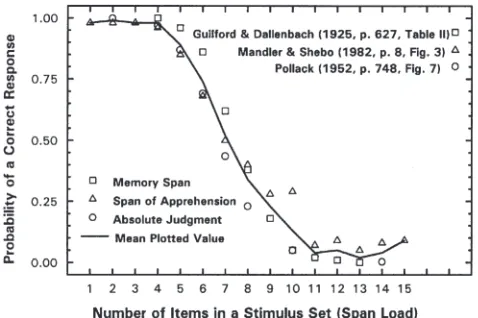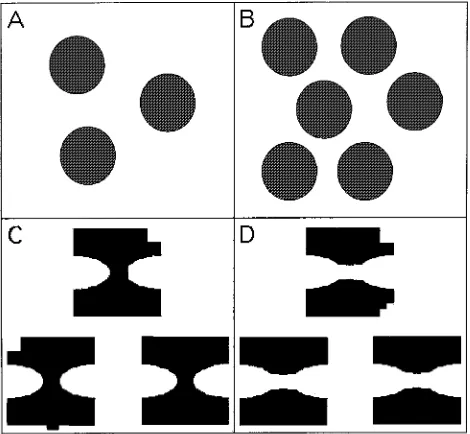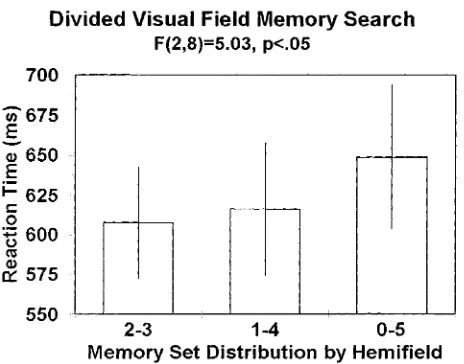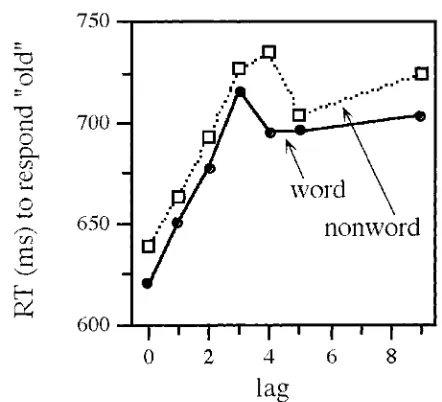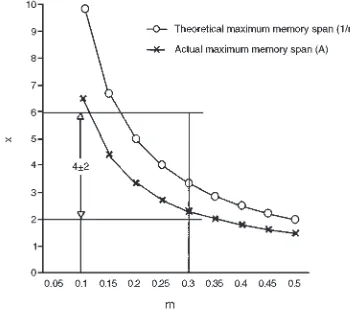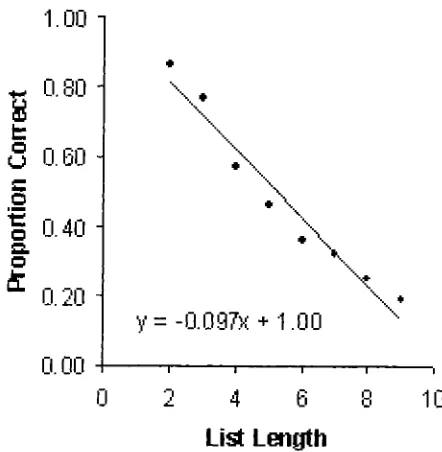1. Introduction to the problem of mental
storage capacity
One of the central contributions of cognitive psychology has
been to explore limitations in the human capacity to store
and process information. Although the distinction between
a limited-capacity primary memory and an
unlimited-capacity secondary memory was described by James (1890),
Miller’s (1956) theoretical review of a “magical number
seven, plus or minus two” is probably the most seminal
pa-per in the literature for investigations of limits in short-term
memory (STM) storage capacity. It was, in fact, heralded as
one of the most influential Psychological Review
papers
ever, in a 1994 centennial issue of the journal. Miller’s
ref-erence to a magical number, however, was probably a
rhetorical device. A more central focus of his article was the
ability to increase the effective storage capacity through the
use of intelligent grouping or “chunking” of items. He
ulti-mately suggested that the specific limit of seven probably
emerged as a coincidence.
Over 40 years later, we are still uncertain as to the nature
of storage capacity limits. According to some current
theo-ries there is no limit in storage capacity per se, but a limit
in the duration for which an item can remain active in STM
without rehearsal (e.g., Baddeley 1986; Richman et al.
1995). This has led to a debate about whether the limitation
is a “magic number or magic spell” (Schweickert & Boruff
1986) or whether rehearsal really plays a role (Brown &
Hulme 1995). One possible resolution is that the focus of
attention is capacity-limited, whereas various
supplemen-tary storage mechanisms, which can persist temporarily
without attention, are time-limited rather than
capacity-limited (Cowan 1988; 1995). Other investigators, however,
have long questioned whether temporary storage concepts
are necessary at all, and have suggested that the rules of
learning and memory could be identical in both the short
and long term (Crowder 1993; McGeoch 1932; Melton
1963; Nairne 1992; Neath 1998).
At present, the basis for believing that there is a time
BEHAVIORAL AND BRAIN SCIENCES (2000)
24,
87–185
Printed in the United States of America
The magical number 4 in short-term
memory: A reconsideration
of mental storage capacity
Nelson Cowan
Department of Psychological Sciences, University of Missouri, Columbia, MO 65211
[email protected] www.missouri.edu/~psycowan
